- Technical Guide
Quality Control in Manufacturing: Definition, Importance, & Objectives
Introduction:
Quality control in manufacturing is a crucial aspect of business operations that ensures products meet the highest standards of excellence. In today’s competitive market, where customer satisfaction reigns supreme, companies cannot afford to compromise on quality. Whether it’s producing cars, electronics, or even food items, maintaining strict quality control measures is imperative for success and growth.
What is Quality Control in manufacturing?
Quality control in manufacturing refers to the processes and procedures put in place to maintain consistency and conformity of products throughout the production cycle. It is a systematic approach that involves inspecting, testing, and monitoring various aspects of the manufacturing process to ensure that products meet predetermined quality standards.
One key aspect of quality control is the quality inspection of products in manufacturing. Quality inspection in manufacturing involves thoroughly examining each unit or batch of products for defects, inconsistencies, or deviations from specifications. Manufacturers can identify and rectify issues before reaching consumers by conducting rigorous inspections at various stages – from raw materials procurement to final packaging.
In addition to inspection, quality control also encompasses testing procedures. These tests may involve subjecting products to various performance assessments, such as stress, durability, or functional tests. Through these evaluations, manufacturers can verify that their products perform as intended and withstand real-world conditions.
It’s integral to successful manufacturing operations, directly impacting profitability, sustainability, and growth.
Quality Assurance (Q.A.) vs. Quality Control (Q.C.)
Quality Assurance and Quality Control in manufacturing are two essential components of a successful manufacturing process. While they both play crucial roles in ensuring product quality, there are distinct differences.
Quality Assurance focuses on preventing defects and errors from occurring in the first place. It involves implementing processes, procedures, and systems to ensure that products meet predetermined standards throughout the entire production cycle. Q.A. is proactive and emphasizes preventive measures to identify potential issues before they arise.
On the other hand, production Quality Control is all about detecting and addressing any deviations or defects during manufacturing. It entails conducting inspections, tests, and measurements to verify whether products meet specified requirements. Quality Control in manufacturing is reactive in nature as it seeks to identify problems after they have occurred.
While QA focuses on continually improving processes to prevent issues from arising again, Q.C. aims to identify faulty items or batches for rectification purposes.
Both QA and Q.C. work hand in hand to achieve optimal quality management in manufacturing operations. By combining their efforts, companies can minimize defects while consistently delivering high-quality products to their customers.
Differences between Quality Assurance and Quality Control
Quality Assurance | Quality Control | |
|---|---|---|
1. | Guide to protect against defects to assure quality. | Aims to figure out defects and rectify them to ensure quality. |
2 | Quality Assurance is part of the Production cycle or the complete product development life cycle. | Quality control is part of the Testing cycle. |
3 | Aims to ensure that all quality requirements are met. | Aims to figure out if there are any requirements parameters unfulfilled. |
4 | It engages in managing quality. | It engages in verifying and validating the quality. |
5 | Q.A takes Proactive measures to prevent defects and ensure quality. | Q.C takes a Reactive measure to identify the defects. |
6 | QA process comes after a Quality control check. | QC process takes place before QA to maintain quality. |
7 | Q.A is process oriented. | QC is product oriented. |
8 | Q.A examples – guidelines that include all the standards, the design of the product, packaging, manufacturing, distribution, etc. | QC examples include batch inspection of manufactured products, validation tests, etc. |
Standard and Metrics for Q.A and Q.C:
Manufacturers or Plant managers strive to ensure that their plants comply with high-quality standards. One of the best ways to achieve this is to monitor the quality parameters, delivery speed, and related metrics.
There are certain global standards and metrics being followed as part of Quality management practice.
The following points are high-level quality metrics measured in the manufacturing industry :
1. Time-based metrics: Apply to measure the time it takes to perform a production and test cycle on daily basis. The time-based efficiency metrics can be calculated as below.
2. Manufacturing Cycle Time: It is the amount of time that takes from manufacturing order to production to finished goods.
a) Throughput time = Process time +testing time + move time + Queue time
b) Changeover Time: The time it takes to switch a line to another product.
3. Rejection/Scrap rate: The reliability of products as measured by the probability of rejection over a period. Product rejection may include all the internal scrap, damage, color issues, and other quality parameter failures. Scrap rate is calculated as the percentage of materials sent to production that never become part of finished products.
The scrap rate can be calculated as –

4. Cost of quality: It is one of the most important quality metrics to be considered for a better run-rate of production operations. The actual cost of quality includes the cost of poor quality and the cost of assured quality.
The cost of quality can be calculated as –
Cost of quality = cost of poor quality+ cost of good quality
5. OEE metrics: Overall Equipment Efficiency (OEE) is an effective metric to measure productivity and quality efficiency. Improving the OEE will help to reduce manufacturing cycle times and improves performance to meet customer commitments on time. OEE is calculated as availability multiplied by performance and quality.
Three-component metrics of OEE can be calculated as –
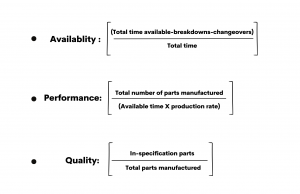
6. Delivery metrics: There are two major components of delivery metrics to be measured concerning delivery up to customers’ satisfaction and efficiency.
a) On-time delivery (OTD) is calculated as the percentage of units delivered within the OTD window.
b) Perfect order metric (POM) or fill rate is the percentage of orders that deliver complete, on-time, damage-free, and with a correct invoice.
To calculate this, each component of this metric gets multiplied together as :
POM=(%complete) x (%on time) x (%damage free) x (%correctly invoiced).
Why is Quality Control essential in Manufacturing Operations?
Production Quality control is an indispensable aspect of manufacturing operations, ensuring that products consistently meet the desired quality standards. Manufacturers can identify and address any deviations or defects in the production process by implementing stringent quality control measures.
This helps prevent the release of faulty or substandard products onto the market, safeguarding the reputation and credibility of the company.
One of the primary benefits of quality control in manufacturing is the reduction of product defects and variations. Manufacturers can determine any deviations from the desired quality parameters by conducting thorough inspections, tests, and measurements at various stages of the manufacturing process.
This enables them to take corrective actions promptly, such as adjusting production settings, reworking defective components, or modifying process parameters. Quality control increases product consistency, reliability, and performance by minimizing defects and variations and enhancing customer satisfaction and loyalty.
Quality control also plays a critical role in cost reduction and operational efficiency. Defective products not only result in customer dissatisfaction but also lead to increased costs for manufacturers.
Quality control measures help identify the root causes of defects, allowing manufacturers to address them and prevent their recurrence. This reduces the need for rework, waste, and product recalls, saving time and resources. Moreover, by continuously monitoring and analyzing quality data, manufacturers can identify process inefficiencies, bottlenecks, or areas for improvement.
This approach enables manufacturers to streamline production processes, optimize resource utilization, and enhance overall operational efficiency.
Furthermore, quality control in manufacturing is essential for regulatory compliance and risk mitigation. In many industries, manufacturers must adhere to strict quality standards, regulations, and certifications to ensure the safety and well-being of consumers.
By implementing robust quality control systems, manufacturers can ensure compliance with these requirements and avoid legal issues or penalties. Quality control also helps identify and mitigate potential risks associated with product defects, such as safety hazards or liability concerns.
By proactively addressing quality issues, manufacturers can protect their brand reputation, maintain customer trust, and demonstrate a commitment to producing safe and reliable products.
How Can Quality Control Be Improved in Manufacturing?
A critical aspect of manufacturing is ensuring all products meet the required quality standards. Quality control plays a crucial role in achieving this goal. But how can we improve quality control in manufacturing?
First and foremost, it’s essential to have a robust quality management system in place. This involves implementing standardized processes for inspecting, testing and monitoring product quality throughout manufacturing.
Investing in advanced technology and tools is another way to enhance quality control in manufacturing. For example, automated inspection systems can help detect defects or deviations from specifications more efficiently and accurately than manual inspections.
Regular training and upskilling of employees are also vital for improving factory quality control. By providing comprehensive training on product specifications, testing methods, and defect identification techniques, employees can better identify issues early on and take corrective measures promptly.
Additionally, fostering a culture of continuous improvement is crucial. Encouraging employee feedback at all levels of the organization can lead to valuable insights into potential areas for improvement within the manufacturing process.
Collaboration with suppliers is another important aspect of enhancing quality control in manufacturing. Establishing clear communication channels with suppliers regarding product specifications and requirements ensures that raw materials or components meet the necessary standards before they enter the production line.
Leveraging data analytics can significantly contribute to improving quality control in manufacturing operations. Analyzing data collected during inspections or testing processes can provide valuable insights into trends or patterns related to product defects or non-conformities, allowing manufacturers to address root causes effectively.
By implementing these strategies and continuously evaluating their effectiveness through regular audits and reviews, manufacturers can steadily enhance their quality control processes – resulting in higher customer satisfaction rates while minimizing wastage costs associated with rework or returns due to poor-quality products. Tools to monitor Quality Control in Manufacturing
Tools to monitor Quality Control
Quality control tools are used as a systematic method to analyze manufacturing performance data. Based on the data analysis, measures are taken to monitor, manage and improve the quality of a manufactured product. There are seven tools used for quality control in manufacturing industries to understand the impact of quality and prepare the process to address it. These are used for the purpose of identification and analysis of Quality checks.
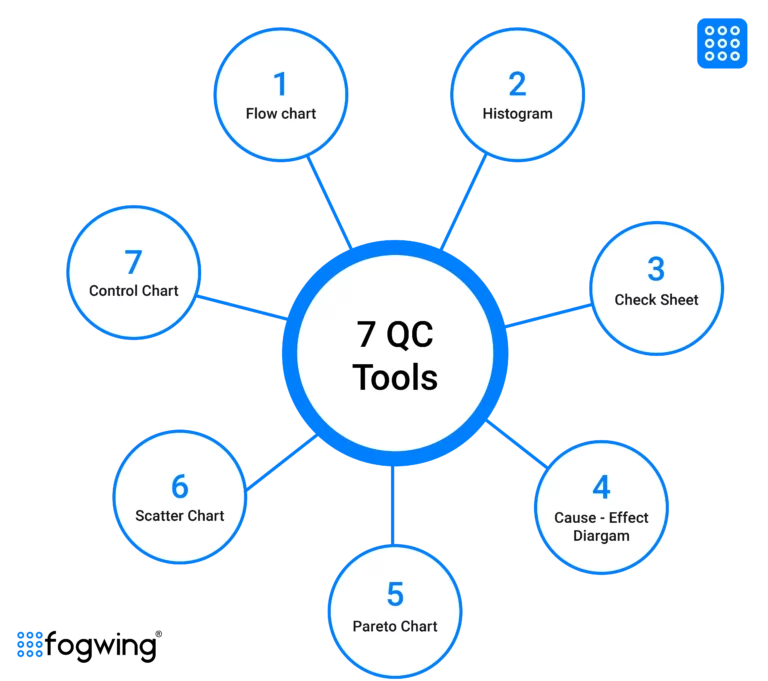
i) Flowchart: Flowcharts are a pictorial representation that indicates a series of steps involved in a factory floor operation. Flow charts help to identify the errors likely to be found in the manufacturing processes. It also provides a picture of inputs, activities, decision points, and outputs that helps to detect and analyze the errors in the QC process.
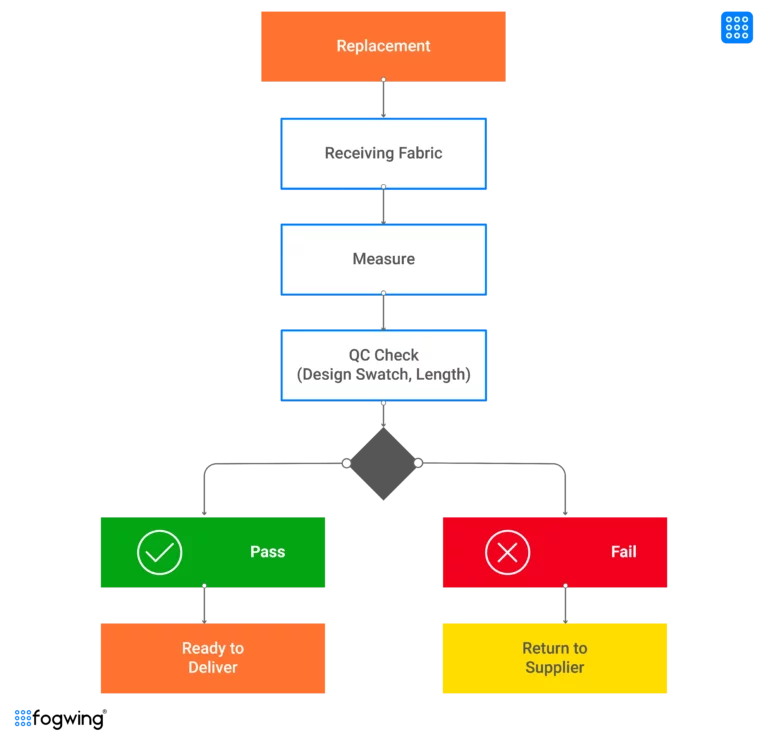
ii) Histogram: Histogram is a bar chart that visualizes attributes and variable data of manufacturing processes. It also shows the measures of central tendency of mean, mode, and average. The histogram provides the user with the distribution of data and the amount of variation within a manufacturing process or operation.
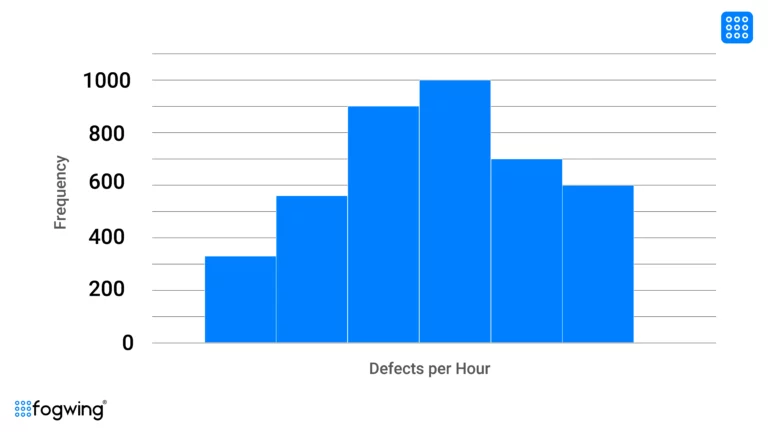
iii) Check sheet: Check sheets are certain formats that aid the user in recording data systematically. These data are collected and tabulated in the form of a check sheet to record the frequency of specific events during the data collection period. Check-sheets are used in the auditing of quality assurance.
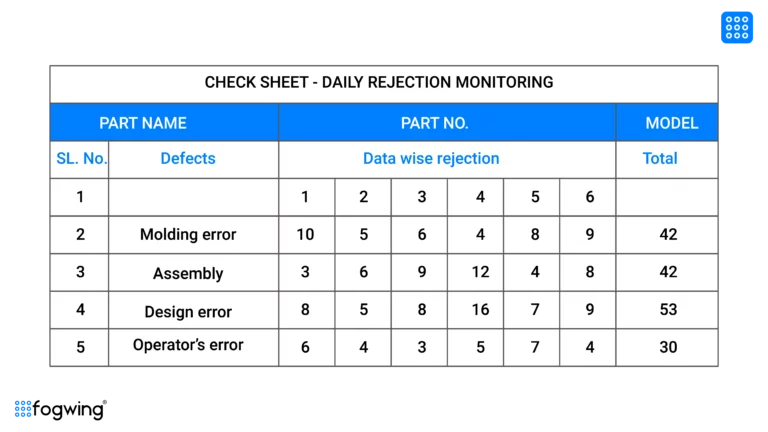
iv) Cause-effect diagram: Cause-and-effect diagram also known as the ‘fishbone’ diagram can be used to analyze the root cause of a manufacturing problem and helps to solve it accordingly. Each major branch of the diagram corresponds to a major cause that directly relates to the effect. This tool is useful in any analysis as it depicts the relationship between cause and effect in a rational manner.
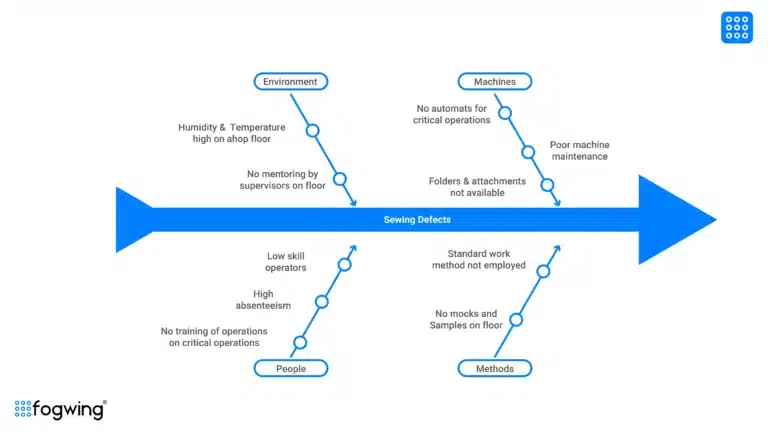
v) Pareto chart: Pareto charts are extremely useful as they can be used to identify the prioritized quality problems, conditions, or their causes in the operation. It is a type of bar chart that shows the relative importance of variables, in descending order from left to right side of the chart. Pareto charts are used to quickly identify what manufacturing issues need priority attention.
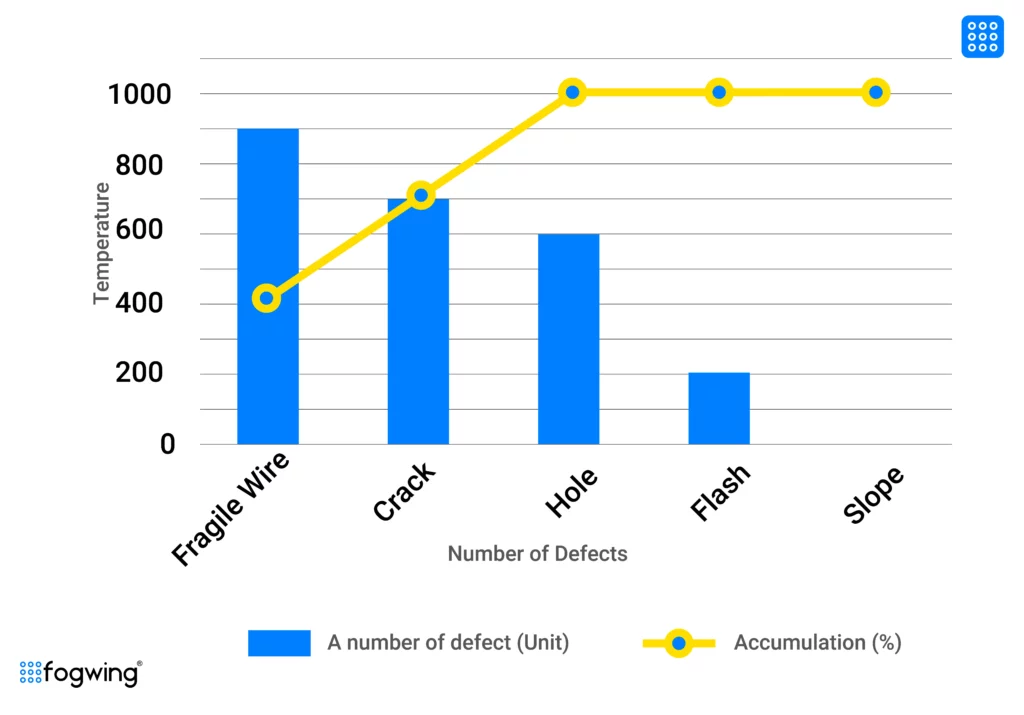
vi) Control chart: Control charts are a special form of run-charts that depicts the amount and nature of variation in the process over time in manufacturing. It is a useful tool to monitor performance and processes in an operation. The main aim of a control chart is to identify and prevent defects in a manufacturing process.
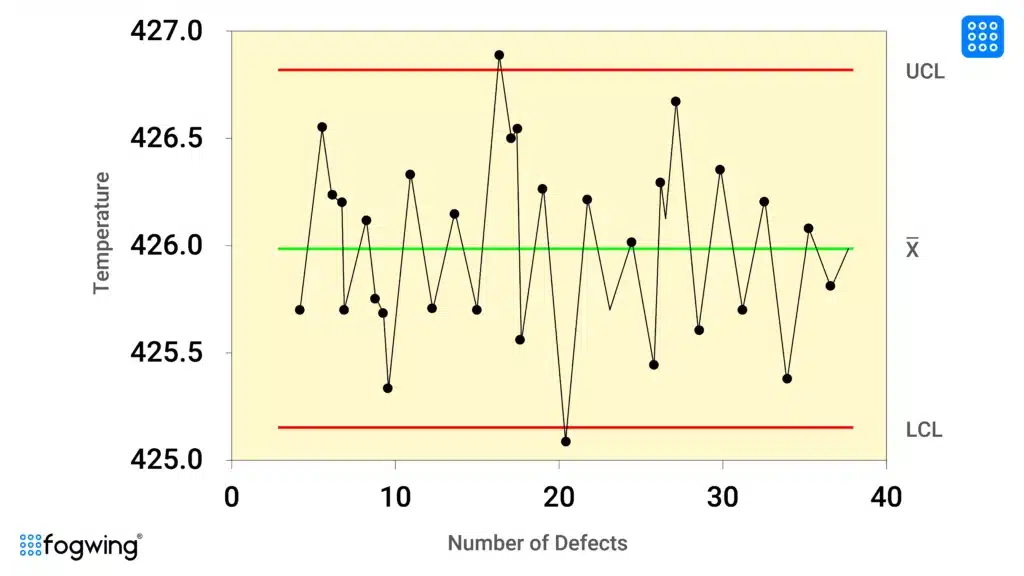
vii) Scatter chart: Scatter charts are diagrams or graphs that depict the influence of one variable on another. The main use of scatter charts is to detect and analyze a pattern relationship between two quality and compliance variables.
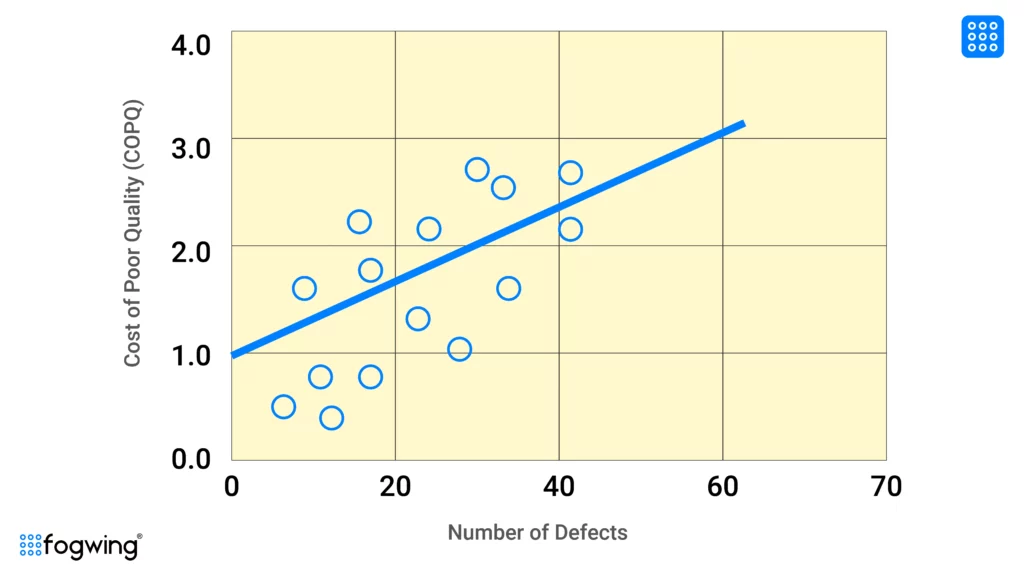
Roles and responsibilities of Q.A. specialist
The Quality Assurance (Q.A.) specialist plays a crucial role in ensuring the control and monitoring of production processes to guarantee quality and compliance.
They are responsible for overseeing the implementation of quality control in manufacturing process at each production stage. Working closely with various groups on the factory floor, Q.A. specialists facilitate etc.
The roles and responsibilities of a QA specialist include:
i) To collect and compile statistical quality data.
ii) To analyze data to identify areas for improvement in the quality system.
iii) To evaluate the adequacy of quality assurance standards.
iv) To ensure proper sorting, grading, and rejecting of materials.
v) To ensure the system and SOPs are followed for the acceptance, rejection, and in-process material.
vi) To develop, recommend, and monitor corrective and preventive actions.
vii) To make sure the product goes through auditing and testing.
viii) To identify if there are training requirements to meet the quality standard.
ix) To identify potential sources of error and suggest ways to eliminate them.
x) To keep a check on customers’ feedback and complaints.
xi) To develop strategies for the improved production process.
xii) To monitor risk management activities etc.
xiii) To assess supplier and service providers’ quality and approve as per the risk profiles.
Conclusion:
Quality Assurance and Quality Control are essential processes in the manufacturing operations to meet the quality commitments. Implementing the quality practice or QA vs QC software solutions helps manufacturers to save time in productivity, reduce wastage costs, and effectively utilize all available resources.
The implementation of quality management practice results in improved product quality, higher productivity, improved cycle time, higher customer satisfaction, improved supplier performance, stronger employee efficiency, and increased return on investment and market share.
Hence, manufacturers tend to adopt MES (Manufacturing Execution System), MRP (Manufacturing Resource Planning), or ERP (Enterprise Resource Planning) software that is incorporated with the QA system for better quality management.
Diagnostic quality information captured by MES systems helps the manufacturers to decide on how the product is to be manufactured for optimum efficiency and quality. Integrating Quality Management with an MES has many benefits for the manufacturers, like standardizing processes, achieving full traceability, expediting audits, and digitalizing QA checks.
MES with integrated QA features enables the factory floor to digitize the whole operation, feeding the QA data into a centralized system automatically.
